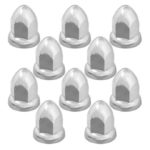A preventive maintenance checklist for semi-trucks program is a requirement that ensures safety and profitability of a fleet. The purpose of a preventive maintenance routine is to identify small problems before they develop into large ones.
A preventive maintenance program requires regular service intervals based on time or distance. An annual inspection is required. Ensuring vehicles are in a suitable condition to pass a CVSA inspection is also a requirement.
A PM program surely does have its associated costs but it minimizes the expensive cost of towing a semi-truck. A trucking operation should expect to allocate 7 percent of its revenue to maintenance costs. If you wish to lower or eliminate maintenance costs, consider leasing a truck as opposed to buying it. The leasing option will generally include maintenance coverage as part of the deal. This is a good route for many post 2007 trucks that have been found to have emissions systems problems.
Driver’s Daily Inspections
A pre-trip and post-trip inspection should be standard procedure but many drivers need encouragement to perform a post trip inspection. The principal operator of the truck may need to do small repair themselves. For example, topping up fluid levels and changing fused bulbs.
Preventive Maintenance Checklist for Semi-Trucks
Here is a list of things that should be checked in your preventive maintenance checklist for semi-trucks.
- Warning and control lamps
- Fault codes displayed in the vehicle instrument cluster
- Air compressors function and condition
- Hinges, locks, doorstops, and sealing strips
- External lamps
- Rear view mirrors and reflectors
- Wiper and washer functioning
- Headlamps
- Hood attachment and locking devices
- Dirt on batteries, leakage attachment, exact gravity of battery acid, fluid level connections and batter box
- Fuel tank, hoses, pipes venting and mounting
- Fuel water separator, and draining of condensation
- Tire wear
- Chassis lubrication
- Cab lubrication
- Oil level in hubs for oil lubricated wheel bearings
- Oil in front drive axle
- Exhaust leakage
- Air dryer
- Steering linkage
- Front shock absorbers
- Front wheels and bearings
- Rear spring bolts
- Fluid levels in windshield wiper reservoirs
- Coolant level
- Mounting for front and rear axle
- Chassis frame and crossmembers
- Brake cylinders, levers and, forks
- Brake linings
- Rear wheels and bearings
- Oil level in manual transmission given your truck is a manual
- Oil in retarder
- Oil level in power steering
- Air cleaner
- Transmission oil cooler hoses and connections for leaks
- Valve adjustment
- Drive belts
- Radiator fan, bearing tolerance, fan cover, bolt unions, and fan ring with rubber seal
- Turbocharger
- Discharge lines and hoses.
The primary categories that require inspections are the power train, suspension, air brakes, steering axle, auxiliary equipment, lamps, electrical system, body and chassis, tires and wheels, and coupling devices.
Be Prepared for Level 1 CVSA and Other Inspections
The Commercial Vehicle Safety Alliance (CVSA) upholds the standards for commercial vehicle safety inspections across North America. The CVSA monitors the contravention, inspection, and accident information on your carrier profile. There are many inspection types but the level 1 inspection is considered the most thorough and common one. The procedure for a level 1 CMV inspection is listed on the CVSA website and it is important to familiarize yourself with this process.
Maintenance records prove useful when it comes time to sell a used truck. Service intervals should be at the minimum every 4 months and as needed. For example, a valve adjustment is required every 130,000 mile or 2500 hours interval, depending on which happens first.
A preventive maintenance program is incomplete without the basic details such as:
- Make, model, year and VIN number of the tractor/trailer
- Lessor’s name (If applicable)
- Date and information of each repair and maintenance carried out
- Odometer readings at maintenance intervals
- Records of axle modification that changes the GVWR
Dynamometer testing
A dynamometer test proves useful for trucks that have been operated for over 300,000 miles or 480,000 km. They are designed to identify problems with low horsepower, emissions systems, and overheating. The average semi-truck dyno test cost is roughly $100.
How to Lower Semi-Truck Maintenance Costs
There are multiple in-house maintenance tasks that should be performed on a semi-truck. These include:
Check for charge air cooler leaks
The charge air cooler (CAC) is located in front of the radiator and must be checked for leaks with a pressure test kit. Charge air coolers are designed to cool superheated air from the turbo before it moves into the intake manifolds. The greater the amount of pressure weight lost, the lower the fuel mileage and higher diesel expenses.
Greasing
Purchase a good-quality lever action grease gun, grease and wipes which will cost $50 and last for 5 jobs. The shop can easily charge $35 for a one-time greasing whereas you can do it for $10 on your own.
Other tasks to be performed include changing the crankshaft damper every 500K miles, changing shock absorbers during tire replacement, and cleaning DPF at the 400K mile interval.
Concluding Information
The best source of assistance you can get in designing and implementing your preventive maintenance program is from the original equipment manufacturer. Often this is done through your nearest dealership. Much information can also be found in the written manuals supplied with each truck.




That’s good to know that if a semi truck has over 300,000 miles or 480,000 km on it that they should get a dynamometer test to identify any problems with the horsepower, emissions systems, or overheating. This is smart to do since it ensures that the truck is safe and has maintenance done before any failures happen. It would be good to find a service that can perform this test along with the repairs so they only have to go to one place to have the truck worked on.
It was helpful when you said that you should check for air cooler leaks. My husband runs a semi-truck business and he was telling me last night about how he wanted the best performance for his trucks. I’ll make sure to pass this information along to him so he can know how to maintain his trucks.
Trailers should be looked at carefully too. A new trailer should be put through the same paces. Too often a trailer is neglected, especially for the pre-service check, which may seem unimportant. Like tractors and trucks, federal regulations require that trailers have a regular maintenance schedule. If you are going to add any special equipment to a vehicle during the pre-service period (lift gates, autogreaser, etc.) or at any other time, you will want to add a couple of steps to the process. First, verify that the alterations are legal by checking Part 393, Part 571, and Appendix G. Then be sure to add the work to your pre-service and inspection checklists.
Thanks for pointing out that having a repair and maintenance record will help a lot when getting preventive maintenance for a semi-truck. My uncle would like to start using his old semi-truck for his farm so that it would be easier to move his produce around. Perhaps it would benefit him a lot to visit semi-truck repair services from time to time.
What is a IPM?
My sister would like to buy a new transfer case for his truck, which is why she’s currently looking for a reputable dealer. Well, I also agree with you that it would be smarter to have an annual inspection too. Thank you for clarifying here as well the importance of checking its air compressors.
My mother noticed that her semi trucks’ engine is starting to leak, which is why she has decided to have it repaired. Thank you for sharing here as well that its shock absorber must be replaced too. It’s also a good thing that you clarified here the importance of preventive maintenance.
It was helpful to know that checking simple things like charging air cooler leaks can cut maintenance costs. I would imagine the difficulty of a truck driver being stuck in the middle of the road because of engine issues. It’s really important to have a trusted repair and maintenance service so you can avoid these hassles.
It was helpful to know that checking simple things like charging air cooler leaks can cut maintenance costs. I would imagine the difficulty of a truck driver being stuck in the middle of the road because of engine issues. It would also help to have employers that would maintenance put this to mind for the safety of their employees.